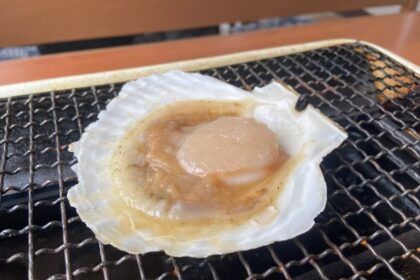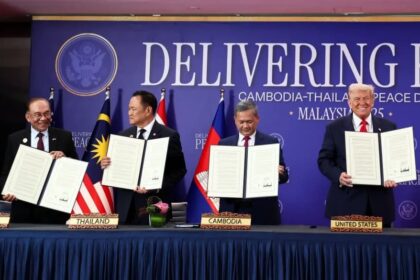Japan’s Don Quijote: A Retail Powerhouse Rides the Tourism Wave
Japan’s iconic discount retailer Don Quijote, affectionately known as “Donki,” is embarking on an ambitious expansion plan that could reshape the country’s retail landscape. The company’s parent, Pan Pacific International Holdings (PPIH), has announced it will open 250 new Don Quijote stores by 2035, targeting the surging influx of foreign tourists and shifting domestic consumer habits. This bold move comes as Japan’s government aims for 60 million annual visitors by 2030, and as the weak yen and rising inflation drive both tourists and locals to seek out bargains.
- Japan’s Don Quijote: A Retail Powerhouse Rides the Tourism Wave
- What Fuels Don Quijote’s Explosive Growth?
- How Is Don Quijote Targeting Tourists?
- Beyond Tourism: Domestic and International Strategies
- Financial Targets and Corporate Vision
- Challenges and Policy Uncertainties
- Broader Implications for Japan’s Retail and Tourism Sectors
- In Summary
Don Quijote’s strategy is more than just a numbers game. It’s a calculated bet on the future of Japanese tourism, the evolving needs of consumers, and the enduring appeal of its unique, sensory-overload shopping experience. As the company sets its sights on ¥400 billion (about $2.7 billion) in annual tax-free sales by 2035, it’s worth examining what makes Don Quijote so successful—and what its expansion means for Japan’s economy, retail sector, and global brand.
What Fuels Don Quijote’s Explosive Growth?
Don Quijote’s rise is a story of innovation, adaptability, and timing. Founded in the 1980s by Takao Yasuda, the chain disrupted Japan’s staid retail sector with late-night hours, flexible pricing, and an eclectic product mix. Today, its stores are a chaotic wonderland where shoppers can find everything from cherry-blossom KitKats and anime figurines to nostril-hair wax and high-end cosmetics. The “treasure hunt” atmosphere—cramped aisles, flashing signs, and the ever-present Donpen penguin mascot—has become a tourist attraction in itself.
Several factors have converged to propel Don Quijote’s recent growth:
- Tourism Surge: Japan’s post-pandemic tourism boom has shattered records, with visitors from South Korea, Taiwan, China, the US, and beyond flocking to the country. The weak yen makes shopping in Japan especially attractive for foreigners, who can also take advantage of tax-free shopping on many items.
- Domestic Inflation: With Japan’s core inflation rate rising to 3.2 percent in March 2025, local consumers are increasingly seeking budget-friendly alternatives for everyday goods. Don Quijote’s low prices and private-label products have made it a go-to destination for cost-conscious shoppers.
- Unique Shopping Experience: The brand’s “organized chaos” and vast selection turn shopping into an adventure. As one US tourist told Digital Journal, “I was overwhelmed by the variety but pleased with the value, buying a range of items for about $70.”
- Tax-Free Shopping: Don Quijote’s streamlined tax-free system allows tourists to shop without paying Japan’s consumption tax, further boosting its appeal.
According to PPIH’s latest annual report, the company’s revenue has grown by 12% year-on-year, with tax-free sales exceeding forecasts. In the year through June 2025, consolidated net profit rose to ¥90.5 billion, and projections for the following year anticipate breaking the ¥100 billion mark for the first time.
How Is Don Quijote Targeting Tourists?
Don Quijote’s expansion is laser-focused on capturing tourist spending. The company plans to open new stores along key travel routes and in popular destinations such as Tokyo, Osaka, and Sapporo. These locations are not only tourist magnets but also serve as gateways to regional Japan, where the company sees untapped potential.
Recent store revamps, like the overhaul of the flagship Sapporo outlet, are designed to attract overseas visitors who are venturing beyond the “Golden Route” of Tokyo, Kyoto, and Osaka. The new stores will feature:
- Smaller, tourist-focused layouts (300–1000 sqm) for easier navigation
- Late-night hours to accommodate travelers’ schedules
- Product selections tailored to foreign tastes, including snacks, over-the-counter medications, and anime merchandise
- Multilingual signage and staff to assist international customers
Don Quijote is not alone in this strategy. Other major Japanese retailers, such as Bic Camera, are also expanding tourist-oriented stores, with plans for English and Chinese signage and collaborations with airlines to promote shopping to inbound travelers. But Don Quijote’s brand recognition and “must-visit” status give it a unique edge.
“Treasure Hunt” Shopping: The Tourist Perspective
For many visitors, shopping at Don Quijote is as much a cultural experience as it is a retail one. Tourists describe the stores as a “treasure hunt,” where the thrill lies in discovering quirky souvenirs, exclusive snacks, and unexpected bargains. A Reddit user summed up the experience:
“Tourists often treat shopping at Don Quijote as a ‘treasure hunt,’ searching for bargains and souvenirs. The popularity of Don Quijote among visitors is contributing to the store’s strong performance in Japan’s retail sector.”
However, some tourists have noted that prices at “tourist” Don Quijote locations can be higher than at local branches, reflecting the company’s awareness of its appeal and the willingness of travelers to pay for convenience and novelty.
Beyond Tourism: Domestic and International Strategies
While tourism is a key driver, Don Quijote’s growth is also rooted in its ability to adapt to domestic economic pressures and expand internationally. Japanese consumers, squeezed by rising prices, are increasingly turning to discount retailers for essentials and branded goods. Don Quijote’s private-label products and aggressive pricing have helped it capture this market.
The company is also innovating with new store formats and product lines. In 2026, PPIH will launch a new food-focused store brand, with plans for 200–300 outlets over the next decade. This diversification aims to tap into Japan’s robust food culture and the growing demand for affordable groceries.
Internationally, Don Quijote operates more than 100 stores outside Japan, including in the US, Taiwan, Thailand, and other Asian countries. The company’s acquisition of the US-based Mikuni Restaurant Group signals a push into the overseas food business, leveraging Mikuni’s expertise in sourcing ingredients and appealing to global tastes.
Platform for Global Brands and Innovation
Don Quijote’s vast network and popularity make it an attractive platform for international brands seeking entry into the Japanese market. For example, South Korea’s Bibigo food brand has expanded its presence by securing shelf space in Don Quijote stores across Japan, reaching new consumers and boosting brand recognition.
Similarly, the chain has partnered with Pudgy Penguins, a globally recognized NFT (non-fungible token) brand, to launch physical NFT toys in Japan. These toys, which come with QR codes unlocking digital collectibles, reflect Don Quijote’s willingness to experiment with cutting-edge trends and appeal to younger, tech-savvy shoppers.
Financial Targets and Corporate Vision
PPIH’s expansion plan is underpinned by aggressive financial targets. By 2035, the company aims for ¥400 billion in annual tax-free sales, driven by increased store traffic from international customers. Representative Director Hideki Moriya, set to become president in September 2025, has stated:
“We will build a company that can earn ¥300 billion in operating profit.”
The company’s annual report highlights its commitment to customer-centric retail, digital transformation, and sustainability. Management sees continued growth in both domestic and international markets, with a focus on innovation and adapting to changing consumer behaviors.
Challenges and Policy Uncertainties
Despite its momentum, Don Quijote faces several challenges. The company’s cramped, chaotic store layouts—while part of its charm—can be overwhelming for some shoppers. There is also the risk of trade tariffs affecting international expansion, particularly in the US market.
Perhaps the most significant uncertainty is the future of Japan’s tax-free shopping system. As tourist numbers soar, some policymakers are questioning whether the country is profiting enough from the influx. Lawmakers have begun discussing the possibility of abolishing tax-free shopping for tourists, which could impact retailers like Don Quijote that rely heavily on duty-free sales to attract foreign customers. The debate is ongoing, and any policy changes could reshape the economics of inbound tourism retail.
Broader Implications for Japan’s Retail and Tourism Sectors
Don Quijote’s expansion is emblematic of broader trends in Japan’s economy. The convergence of tourism, inflation, and shifting consumer preferences is driving a transformation in retail. Discount chains like Don Quijote are not only thriving but also setting the pace for innovation, customer engagement, and internationalization.
For Japan, the success of Don Quijote and similar retailers is a sign of the country’s ability to adapt to global trends while maintaining its unique cultural identity. The “treasure hunt” shopping experience, the embrace of international brands, and the integration of digital and physical retail all point to a dynamic future for Japanese commerce.
In Summary
- Don Quijote plans to open 250 new stores by 2035, targeting the surge in foreign tourists and changing domestic consumption.
- The company’s parent, Pan Pacific International Holdings, is aiming for ¥400 billion in annual tax-free sales and continued profit growth.
- Tourism, inflation, and a unique shopping experience are driving Don Quijote’s explosive growth in Japan and abroad.
- New store formats, international partnerships, and innovative product offerings are central to the expansion strategy.
- Policy debates over Japan’s tax-free shopping system could impact future growth, but Don Quijote’s adaptability positions it well for ongoing success.
- The retailer’s expansion reflects broader shifts in Japan’s retail and tourism sectors, highlighting the country’s resilience and openness to change.












